Crunching in the joints is a clicking or cracking sound heard during active and passive movements. Why do human bones crunch if there is no disease? And what does this crunch represent? Should we be afraid of him?
Often sounds are made by the knee, hip, wrist, elbow, shoulder and jaw joints. This may be normal or a deviation.
Why do the bones in the arms and legs crunch?
- Due to synovial fluid - a normal variant;
- Hypermobility;
- Arthrosis, bursitis, arthritis, tendinitis;
- Lack or excess of physical activity;
- Dysplasia or injury.
Standard options
An indicator that everything is normal with the joints is the absence of pain. If after the examination no violations are revealed, then in most cases doctors are inclined to the hypothesis: the joints are washed by synovial fluid in which there is a little dissolved gas.
At a certain point, gas bubbles sharply increase the volume of the joint cavity, so a click occurs when moving. In medicine, this process is called cavitation, and it is a normal phenomenon. The frequency of crunches should not exceed one every 15-20 minutes, otherwise this is already a violation.
Also, dull sounds occur when a ligament or tendon touches a bone, such as the wrist, hip, or shoulder.
If the bones crunch, what should you do?
You should consult a doctor when:
- The crunching occurs more than once every 15 minutes;
- Accompanied by pain;
- After an injury or fall;
- If the sound has changed over time, then closer monitoring is necessary.
Hypermobility
Some people have connective tissue defects, which manifest themselves as weakness of the articular-ligamentous apparatus. They manifest themselves as increased joint flexibility. This phenomenon does not pose any particular danger, but there is an increased risk of frequent dislocations and subluxations.
There are about 5-8% of people in the world with such defects, but they are at risk for injuries and arthrosis.
If a person knows about his pathology, then if a crunch appears in the legs or other parts of the body, he should contact an orthopedist or arthrologist.
This phenomenon does not mean that any disease has developed. But you need to get advice from a specialist regarding active recreation, sports, etc.
The doctor will definitely tell you about precautions, for example, it is recommended to use shoes with high lacing to avoid dislocation ankle joint. Getting advice from a doctor can help reduce the risk of injury. If you follow the recommendations, you can safely avoid troubles associated with connective tissue defects. At the same time, the quality of human life will hardly suffer.
Arthrosis, bursitis, arthritis, tendonitis
If the crunch is accompanied by pain, occurs with each repetition of the movement (without an interval, which is a variant of the norm), and there is also limited mobility, then a serious disease may have developed - arthritis, osteoarthritis, tendonitis (inflammation of the tendon), bursitis (damage to the joint capsule), or others .

It is necessary to consult a doctor so that, after diagnosis, he prescribes appropriate treatment. Only a specialist can determine what kind of disease has affected the patient, because conditions are often observed when several pathologies occur simultaneously in one place.
For diagnostic purposes, X-ray and tomographic examinations are performed. Treatment usually includes taking anti-inflammatory drugs, chondroprotectors and a number of other drugs.
Lack of physical activity
Every person needs at least minimal physical activity. If your lifestyle is not active enough, your muscles will weaken and atrophy over time due to inactivity. Accordingly, the ligaments become more sluggish.
When the entire human articular apparatus experiences such metamorphoses, that very clicking begins. This phenomenon can be regarded as a sign - a person should not forget about physical activity.
In such a situation, it is necessary to gradually increase the number of loads. You can choose a sports hobby, go to the gym, take up dancing or fitness. If age does not allow, do a simple warm-up and walk in the fresh air.
Excessive physical activity
A sense of proportion must be present in everything. Both lack and excess of physical activity are harmful.
Crunching can occur due to strenuous exercise, work that requires long standing, carrying heavy objects, etc. Clicking sounds do not always indicate the presence of a disease, but are their harbinger.
It is worth noting that arthrosis most often affects the joints against the background of high physical activity. It is necessary to immediately take into account the body's warning signals, especially if the crunching occurs in the knees.
First of all, consult a doctor. At this stage, the bones, ligaments and tendons are coping with the loads, but what will happen to them next? In the vast majority of cases, it is necessary to reduce activity, for example, change the sport to a less difficult one, change work.
Injuries and dysplasia
When a person injured a joint, for example, a dislocation or sprain occurred, then the connective tissues, even after necessary treatment remain slightly weakened.
Such places are more susceptible to repeated injuries and other diseases. This must be taken into account to avoid such situations. A crunch in an injured joint may not indicate a disease, however, it will remind you that it needs to be taken care of.
Dysplasia is underdevelopment of tissues that enter the joint (ligaments, articular surfaces bones, etc.). In this case, the affected area will be weakened, but not due to injury, but due to underdevelopment.
If the bones in your legs or joints in other parts of your body are crunching, you should first consult a doctor. The specialist will rule out the presence of secondary diseases and give recommendations.
During the diagnostic process, an x-ray or MRI may be prescribed. Research will help the doctor find out the cause and determine whether the crunch is a normal phenomenon for the body or a pathology that needs to be treated.
Treatment
To eliminate a violation, you need to determine the cause that caused it. The first is an x-ray examination. Often it is quite enough. But if there is a need for additional information, then tomography, blood tests, etc. are performed.
If the sounds are a variant of the norm, and not symptoms of the disease, then treatment, accordingly, is not required. Other signs, such as pain and limited mobility, become a reason to suspect the presence of arthrosis or arthritis. In the latter cases, it is necessary to begin treatment as soon as possible to prevent complications.
Why do children's bones crunch?
The structure of muscles and ligaments in children and adults is slightly different. However, clicking sounds most often occur for two reasons.
Primarily due to connective tissue pathologies. This phenomenon was described above. Children, like adults, have increased joint flexibility and at the same time suffer from connective tissue weakness.
In this case, crunchy sounds are mainly considered as a variant of the norm, but it is worth paying attention to cardiovascular system, since this phenomenon is often accompanied by heart pathologies.
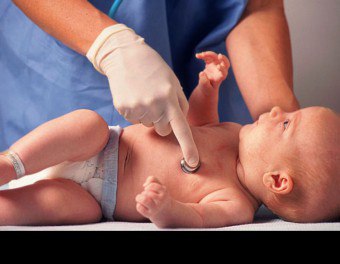
A child with joint weakness should be shown to a cardiologist more often than other children and periodically diagnosed with heart function. Such measures will help you choose the appropriate mode of physical activity to avoid risks.
Bones sometimes crunch due to hypermobility of the joints - this is the second reason. In children and especially in adolescents, the articular-ligamentous apparatus is still immature, therefore tissues and organs develop and grow with at different speeds. If a child sometimes has cracking knees or other joints, but there is no pain or limited movement, then there is no reason to worry.
When the crunch is more like a grinding sound, appears only on one side, causing discomfort, you need to visit a specialist (arthrologist or orthopedist) to exclude the development rheumatoid arthritis or arthrosis. During the diagnostic process, they are sent for a blood test for C-reactive protein, rheumatoid factor and other indicators, and also prescribe x-rays and ultrasound.
All of the above studies allow us to exclude or confirm the presence of the disease, give recommendations or prescribe appropriate treatment.
Cracking in the joints that occurs during active movements or at rest is a common occurrence. The localization of the crunch throughout the body is very different - fingers, knees, elbows, wrists, hip joint, even jaw. Often patients do not understand why joints crack.
Such sounds do not always indicate an existing pathology. Sometimes the crunch is completely harmless and occurs as a result of the formation of gas bubbles in the synovial fluid. Such bubbles arise due to mutual friction of the surfaces of the joints. However, in other situations, crunching is a sign of destruction of cartilage tissue or the result of the formation of osteophytes - pathological bone growths that occur as a result of osteoarthritis.
Crunching in joints - normal variants
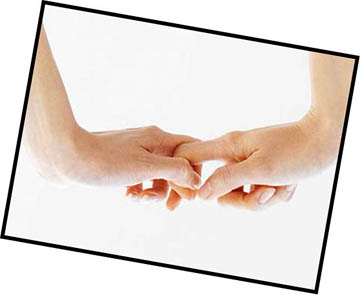 If crunching of joints in a person’s body occurs constantly and is accompanied by pain, it’s time to consult a doctor. If the sounds occur periodically and no pain is felt, then such a crunch is a variant of the norm.
If crunching of joints in a person’s body occurs constantly and is accompanied by pain, it’s time to consult a doctor. If the sounds occur periodically and no pain is felt, then such a crunch is a variant of the norm.
The synovial fluid in the joint acts as a lubricant and shock absorber. If it is not enough, then a crunch in the joints may appear.
Crunching can occur in the joints of the legs as a result of the overlap of adipose tissue with the lower leg or thigh. In knee joints, sounds can be caused by instantaneous pinching of the synovial membrane lining the joint from the inside, between the thigh and kneecap. Sometimes the crunch does not occur in the joints at all, but in the ligaments and tendons. This is also a variant of the norm, and there is no threat to health.
Some people are predisposed to crunching sounds from birth. This feature is inherent in people with congenitally weakened ligamentous apparatus. Weakness of the ligaments leads to hypermobility of the joint: cartilaginous and bone elements become more mobile and lead to frequent overlap of the ligaments.
On the one hand, such mobility of the bones in the joint contributes to the development of phenomenal flexibility - many gymnasts or circus performers have such joint properties and demonstrate their skills in public. But on the other hand, such people are more susceptible to dislocations, sprains and fractures.
Possible reasons
Usually joints crack for the following reasons:
- arthrosis (osteoarthrosis);
- arthritis;
- tendinitis;
- bursitis;
- physical inactivity;
- excessive physical activity;
Let's look at each of the reasons in more detail.
Arthrosis
Crunching of the knees or other joints in the body, accompanied by painful symptoms and occurring with any activity, may indicate the presence of deforming osteoarthritis. It's pretty dangerous disease which can lead to joint destruction and loss of limb mobility. For osteoarthritis degenerative changes They begin with cartilage tissue, then the bones, muscles surrounding the joint, fascia and ligaments are involved in the pathological process.
Arthritis
Arthritis is inflammation of a joint. The disease can be primary or manifest itself as side symptom other pathology. It usually occurs in a chronic form and affects several joints of the body at once. If symptoms occur, consult a doctor immediately. The situation requires long-term treatment with drugs using physiotherapeutic methods.
Bursitis
Bursitis is inflammation of the joint capsule. The disease is accompanied by increased formation of fluid (exudate) in the bursa (articular cavity). The traditional site of localization is the knee or elbow joints. The disease requires systematic treatment in the clinic and occurs in acute or chronic recurrent form.
Tendinitis
Tendinitis is inflammation and gradual degeneration of tendons. Occurs initially at the site of tendon attachment to bone tissue, then can spread to the entire muscle. It usually develops in the knee, hip, elbow and shoulder joints. Often occurs in athletes as a result of excessive or uneven loads.
Physical inactivity
The physiology of the human body is designed in such a way that at least a minimal amount of stress is vital for it. If a person leads a lifestyle in which the activity of muscle tissue and joints is reduced to zero, the tissues no longer receive enough nutrition and atrophy. First, the muscles weaken, then the ligaments, and then the cartilage and bones.
In the joint apparatus, without dosed loading, degenerative processes occur, leading to disruption of the functioning of the limbs and spine. Crunching in the joints may indicate atrophy of anatomical structures.
People who have their own car, work in an office, and prefer passive relaxation in front of the TV to active pastime, sooner or later have to face the problem of degeneration of the musculoskeletal system.
It is more advisable to prevent the disease at an early stage than to treat it later for a long time, wasting time, money and suffering from pain. First, you need to get into the habit of daily walking, then you can think about a sports hobby (visiting a swimming pool, cycling) or purchasing a gym membership.
If you constantly do exercises that strengthen your muscles, this will help get rid of crunching in your joints.
Excessive loads
Both a lack of activity and an excess of it are harmful to joints. Many athletes and representatives of certain professions suffer from crunching and clicking in the joints and accompanying symptoms due to excessively intensive use of the musculoskeletal system.
The risk group includes amateurs and professionals in sports, loaders, people working with vibration equipment, excavators, line workers who experience great physical stress. Over time, these loads lead to permanent microtraumas, which are the most common cause of the spine. Clicking, crunching and pain that occurs during physical activity are a clear sign of degenerative processes.
It is possible that crunching in the joints occurs precisely from increased stress or lack of rest.
Doctors advise athletes to take care of the future of their joints in advance. Extreme loads should be alternated with rest and recovery procedures. Experts give similar advice to people engaged in physical labor. Perhaps crunching and pain in the joints is a sign that it’s time to change professions.
Injuries
Injuries, even those sustained in childhood and treated, inevitably lead to weakening of the damaged joint. Despite the fact that therapeutic procedures have been carried out to the required extent, cartilage and bone structures need constant protection from excessive loads and repeated damage.
If the joints crunch in the place where there was once a dislocation or fracture, this indicates the danger of pathological processes. Often childhood injuries are accompanied by dysplasia - underdevelopment of the tissues that make up the joint. To avoid this, you should take care of full rehabilitation measures in advance and provide medical supervision.
Symptoms
Crunching in the joints, which requires going to the clinic, is accompanied by additional symptoms:
- pain in the joints;
- swelling and redness (in the presence of an inflammatory process);
- local, less often general increase in temperature;
- limitation of range of motion.
Destructive processes in joints are typical primarily for mature age. If such phenomena are left unattended, the tissues will begin to wear out, become inflamed, and lose their functionality.
Diagnostics
 A timely visit to the doctor can save you from dangerous complications and loss of physical activity. Effective therapy depends on competent and complete diagnosis.
A timely visit to the doctor can save you from dangerous complications and loss of physical activity. Effective therapy depends on competent and complete diagnosis.
The most typical diagnostic measures for crunching in the joints:
- radiography of the problem area;
- Ultrasound of nearby tissues;
- puncture of the articular cavity, taking a sample of synovial fluid and further examining it in the laboratory;
- joint tomography;
- laboratory blood test.
Normal MRI anatomy shoulder joint.
The initial appointment is carried out by an orthopedist or traumatologist. In the future, he may refer the patient to a surgeon or other specialists.
Treatment and recovery
Knowing all the possible causes of crunching in the joints, it is important to accurately establish the diagnosis so that the treatment is as effective as possible. Therapeutic tactics depend on the primary disease, age characteristics and other factors.
Degenerative and inflammatory joint diseases require complex treatment. In general, treatment regimens various diseases joints are quite similar:
- At the first stage, pain and inflammation are eliminated - medications are used for this.
- Then measures are taken to restore blood circulation and metabolism in the problem area - for this purpose physiotherapeutic procedures are prescribed (magnetic therapy, applications, electrophoresis, phonophoresis, laser therapy and others).
- At the recovery stage, exercise therapy, massage procedures, and reflexology are prescribed.
After getting rid of crunching in the joints, rehabilitation of the joints and musculo-ligamentous apparatus is of great importance. It may take several months: regularity and a professional approach are important. medical procedures. To fully restore the functionality of the limbs and spine, it is useful to undergo a course of treatment at a sanatorium-resort institution.
Injuries and advanced stages of deforming osteoarthritis sometimes require radical intervention. Both minimally invasive and open abdominal surgeries are performed. The most radical way to treat a damaged joint is to replace it with a high-quality endoprosthesis.
Was this article helpful?
Some people have been “snapping” their fingers since they were in school, and by the age of thirty they begin their mornings with exercises that resemble the grinding sound of an ungreased cart. This bothers some people, while others don’t even pay attention to it. Some are actively involved in treating cracking joints, while others prefer not to think about it. At least until it really starts serious problems. So, why do joints crack?
Causes of crunching
One of the reasons (quite reasonable) for the appearance of crunching is cavitation. Small gas bubbles can form in the joint fluid, which burst when moving and make a characteristic sound. The joints do not hurt.

There is no harm from this, as confirmed by research by Donald Unger. For 60 years, the researcher purposefully cracked his fingers on one hand, while carefully protecting the other. After such a long experiment, they compared the state of both hands. But the studies found no differences.
Causes of harmless crunching
When crunching in joints is harmless:
- If no pain occurs when crunching, and the joints do not hurt at other times;
- The joints have normal size– not enlarged, not surrounded by swollen soft tissues;
- Mobility is not impaired.
In a significant number of cases, crunching in the joints without pain does not have any pathological reasons and is simply due to the imperfection of connective tissue - cartilage.
There is no reason for concern if the joints crack only at the beginning of the movement and after that the clicks do not repeat.
Causes of crunching associated with diseases
But everything is not always so good. The cause of crunching in the joints can also be diseases:
- Congenital or acquired deviations in the structure of the joint, causing the solid components to rub against each other with characteristic clicks. In this case, as a rule, pain is not felt.
- Injuries.
- Inflammatory process in muscle mass. However, in this case, doctors find it difficult to formulate the cause of the crunch. Some associate it with fatigue and overload of the joint.
- Joint hypermobility is a deviation in which the joints are characterized by excessive mobility. GMS most often has a congenital nature. During GMS, bones can diverge quite strongly to the sides, and their return to their normal position causes a crunch.
- Arthrosis. Worn cartilage prevents bones from moving easily enough. Because of this, a crunching sensation occurs and, accordingly, pain. In 15% of all cases, the cause of the crunch is arthrosis. People over 30 years of age need to be especially careful.
- Excessive salt deposits. This makes the cartilage stiffer, making movement more difficult. The result is a crunch with every movement.
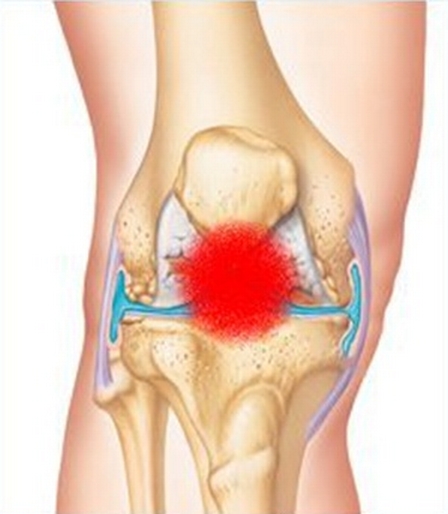
Salt deposits in the joints also cause crunching.
Less common causes of cracking joints:
- All nervous overload and stress;
- Metabolic diseases;
- Diseases of the liver, gall bladder, kidneys.
If crunching is a sign of illness, treatment is simply necessary and cannot be postponed.
At-risk groups
The range of people susceptible to joint crunching is huge. But there are certain risk groups in whom a crunch may indicate the presence of diseases, and sometimes is a harbinger of joint destruction:
- People leading a sedentary lifestyle. Sedentary work, staying in one position for a long time - these are the reasons that contribute to weakening of the joints. The muscles do not train, the ligaments become weak. And at the other extreme – too much physical activity and increased activity, which also lead to joint pain.
- Patients with a hereditary predisposition.
- People who drink water containing high amounts of salts. This is usually due to the characteristics of the region of residence - in some drinking water simply contains a huge amount of salts, which can be deposited and subsequently cause crunching.
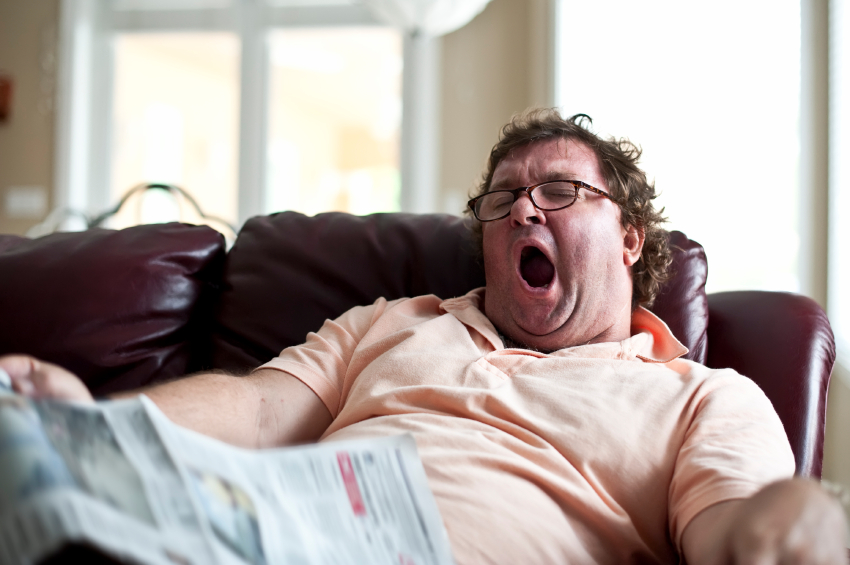
Little movement, hereditary factors and an unbalanced diet are a direct consequence of the occurrence of crunching.
Crunching in the joints can occur even in very young children, but it is usually associated with the immaturity of the ligamentous-muscular system. After musculoskeletal system will get stronger, the crunching in the joints will disappear. If the cracking of the joints is caused by the anatomical features of the structure of the joint, then it is better to contact a traumatologist - he will help you create the most useful diet for correcting the composition of the intra-articular fluid and recommend the necessary physical activity.
All joints of our body can crunch - from the smallest on the toes to the largest, such as the hip.
Diagnostics
What to do if your joints crack? Since crunching in joints throughout the body is simply a consequence of certain diseases, first of all you need to diagnose them. You can contact a traumatologist or rheumatologist with this question.
The following tests are prescribed to diagnose the causes of crunching in the joints:
- Ultrasound. This allows us to identify pathologies in the development of all joints.
- X-ray.
- Computed tomography and MRI. These studies allow you to most accurately see the condition of all joints.
Do not be surprised if the doctor prescribes an ultrasound of the gallbladder and liver - this will allow him to rule out a possible lack of collagen production by the body.
An ultrasound of the kidneys may be required - quite often the cause of all problems with the composition of the synovial fluid is renal failure.

A blood test is performed to determine the level of rheumatoid factor. But this analysis has one big drawback - the increase in level occurs only 6-8 weeks after the onset of the disease, so sometimes it normal level does not mean that the patient is healthy. Especially if there are other signs of illness.
Treatment of cracking and joint pain
The classic treatment regimen for cracking joints consists of 3 stages:
- Relieving pain from crunching in joints if they hurt. Various analgesics help with this.
- Elimination of the inflammatory process. Crunching in the joints is not always accompanied by inflammation. But if it occurs, then they are appointed. Meloxicam, Diclofenac, Ibuprofen - will relieve pain and reduce inflammation.
- Restoration of bone cartilage tissue.
The first two stages are no different from the treatment of all rheumatoid diseases.
The third stage of treatment requires more careful consideration, because nothing less than the patient’s future lifestyle depends on its success.
It is impossible to achieve complete restoration of the cartilage tissue of the bone with any treatment. But it is necessary to stop the degenerative processes in the joint as much as possible in order to avoid its further destruction.
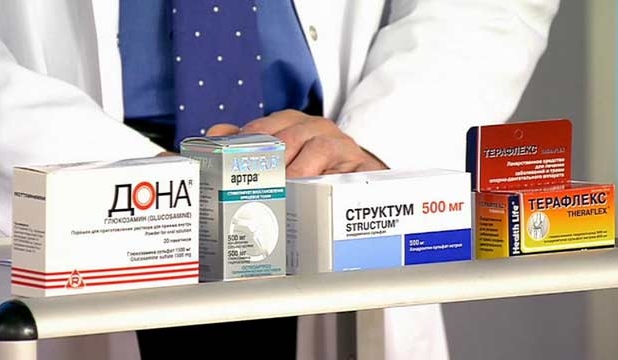
The slowest, but the most effective way achieve this - . The best results have been recorded if treated with chondroprotectors for early stages when crunching in the joints does not cause pain. Their use at later stages will prevent the destruction of bone cartilage and reduce the amount of anti-inflammatory drugs used non-steroidal drugs, which can be quite difficult to achieve in other ways.
Although the market is filled with chondroprotectors different forms, but the decision about which particular drug the patient needs should be made only by a doctor!
The duration of treatment with chondroprotectors is also determined by the doctor and ranges from 1 to 3 months.
The most extreme case, when the joint cannot be restored and treatment does not produce tangible results, is an operation to replace it.
Folk remedies
In order to solve the question “How to get rid of crunching in the joints?” You can also refer to recipes recommended by traditional medicine. To treat crunching in joints throughout the body, the first step is to clean them, for which soaked rice is most often used. This will help treat all diseases of the rheumatoid type, because quite often the cause of inflammation and even destruction of the joint is salt deposits.
The following recipes are used for cleansing:
- Cleansing with soaked rice. Rice cereals are washed and soaked in water for a day (2 tablespoons per 0.5 liters of water). The next day, wash it again and fill it with fresh water. At the same time, prepare a second jar of rice - wash and soak. As soon as the number of cans reaches 5, the very first portion of rice can be boiled in water without salt and eaten. Then refrain from eating for 4 hours. After 40 days of this “rice diet”, the crunching in the joints will stop bothering you for a long time.
- Decoction bay leaf(boil 30 g of bay leaves for 5 minutes over low heat in 0.3 liters of water), leave for 3-4 hours, and then drink in small portions within 24 hours, after which they take a week’s break and the procedure can be repeated.

A decoction of bay leaves has many contraindications: gastritis, duodenal ulcer, pancreatitis, cholecystitis. Therefore, you need to use this recipe with great caution!
After cleansing, you need to start restoring the cartilage tissue of the bone. Daily consumption of jelly helps in the treatment of crunching joints. It is best to prepare it at home by simply mixing swollen gelatin with jam or berry compote. Store-bought jelly contains dyes that affect nervous system. After two weeks of daily use of the jelly, the cracking of joints will disappear.
Prevention
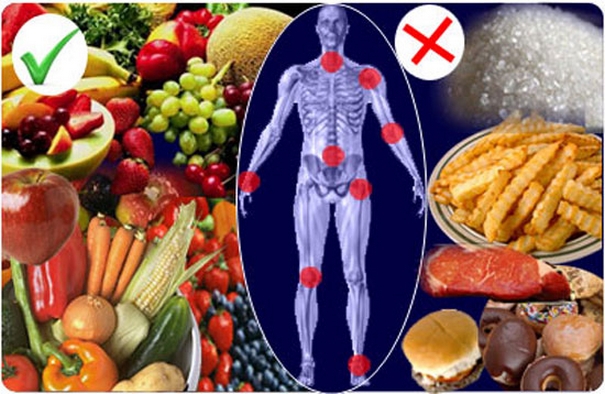
The best treatment is prevention! Therefore, having heard a crunch in the joints, you need to begin a set of golden measures to eliminate the causes:
- Constantly moving– movements help increase blood circulation, which improves the condition of the cartilage of all joints. If your knee joints are cracking, cycling can help.
- Adjust your diet— You need to get enough calcium, magnesium and potassium from your diet. Reduce the amount of salt you consume.
- Lose weight. Excess weight body – the cause of increased stress on the joints.
Crunching in the joints is a rather unpleasant thing, but you just need to make an effort to get rid of the reasons that caused it or prevent the onset of destruction of the joint. After all, life is movement, and with sore joints it is movement with pain. And finally, a useful video.
Crunching in the joints - why it appears in adults and children. How clicking in the joints manifests itself depending on the reason that caused it. The most effective ways restore joints traditional and traditional medicine.
Why do my joints crack?
The range of reasons that provoke crunching in the joints is quite wide. As well as the age at which such “music” can occur during movements - from infants to elderly people. As well as the number of joints themselves involved in the crunching process.
Why do all joints crack in adults?

In itself, the accompaniment of movements by a specific clatter cannot be called pleasant - neither for its owner himself, nor for those around him, especially when all the joints respond with a crunch. In this case, you need to look for a cause of a “global” nature.
The main causes of cracking joints in adults:
- . This is the name given to a congenital feature of the ligamentous apparatus, which, due to its weakness and increased extensibility, makes articular joints more mobile. The ligaments themselves often overlap. This lability in the joint mechanisms leads to clicking. Joint hypermobility is not considered a pathology, but requires special attention, since it often causes injuries (dislocations, subluxations).
- Salt deposition. If all the joints crunch, the cause may be “ossification” of the articular joints due to an excess and deposition of salts in them. This affects both the cartilaginous surface and the surrounding ligaments. They become less elastic and smooth. As a result, friction during movement causes crunching in the joints. This may be a consequence of poor nutrition or drinking water oversaturated with mineral salts.
- Excess protein. Intra-articular fluid saturated with protein can also provoke clicking in the joints. This is caused by excess protein in the diet or inflammatory processes inside the joint.
- Lack of joint fluid. The cause of loud friction of the articular surfaces may also be a deficiency of intra-articular fluid, which is responsible for the smooth movement of articulating bones. The smaller it is, the louder the joints “sound”. This phenomenon can be observed due to age-related changes or as a result of excessive physical exertion. In the first case, the tissues lose their ability to retain moisture, in the second, this moisture is excessively consumed due to active movements.
- Bubble Formation. An absolutely normal phenomenon in the joints, relatively recently discovered by scientists. The theory of this origin of clicks in the joint suggests that as a result of movement, the intra-articular space (articular capsule) increases, rarefaction occurs and gas bubbles form. It is they, when they burst, that make an unpleasant cracking sound. However, not all medical practitioners support this theory.
- Physical inactivity. A sedentary lifestyle does not have the best effect on the condition of the joints. The less movement in the articular joints, the worse the blood supply to them. This leads to stagnation, the accumulation of protein and bubbles, which provokes a crunching sound when moving.
Important! If all your joints are not only cracking, but also painful or have limited range of motion, this may be a manifestation of a serious systemic inflammatory process in the body.
Why do baby's joints crack?

Any young mother is very sensitive to the health of her baby. And if during hygiene procedures, changing clothes or gymnastics she hears clicks in the child’s joints, her concern is quite natural. And there may be several reasons for such “music” in the baby’s body.
The main causes of crunching in joints in infants:
- Age-related features of the ligamentous apparatus. In most cases, quiet, rare crunching sounds in the baby’s arms or legs do not pose any threat to his health. It’s just that his musculoskeletal system is in a state of formation, adaptation and can provide such “grinding in” in the literal sense of the word. Typically, such “sound effects” disappear as soon as the baby begins to move independently. That is, when the musculoskeletal system receives real opportunity strengthen.
- Individual characteristics of the ligamentous apparatus. The already mentioned hypermobility of joints and ligaments manifests itself from the very early age. Almost “from the cradle”.
- Genetic predisposition. Uneven maturation of ligaments, joints and bones and, as a result, crunching in the joints can be a gift from the ancestors. The “pedigree tree” of relatives on your mother’s and/or father’s side will help you find out.
- Inflammatory processes in the joints. If the sound “special effects” in the joints cannot be called periodic, they are accompanied by the baby’s restlessness, crying, whims, and the skin around is red and swollen, this may be a sign of arthritis. This condition requires immediate consultation with a doctor and examination, as it can lead to serious complications.
- Hip dysplasia. The occurrence of a click when moving exactly in hip joint should alert you to a pathology such as dysplasia. In this case, pay attention to the following signs characteristic of this disease: asymmetrical inguinal folds, limited movement of the leg in a bent position (it is not completely retracted to the side), different lengths of the legs. Like inflammatory processes, dysplasia requires urgent intervention from specialists, since it is in infancy that it is best corrected.
Important! If you hear faint clicks in your baby’s joints very rarely and they do not cause him any discomfort, there is no reason to worry. If small joints crunch often, and even more so bother your baby or make you suspicious, be sure to show your child to an orthopedist.
Why do joints crack in a 3-8 year old child?
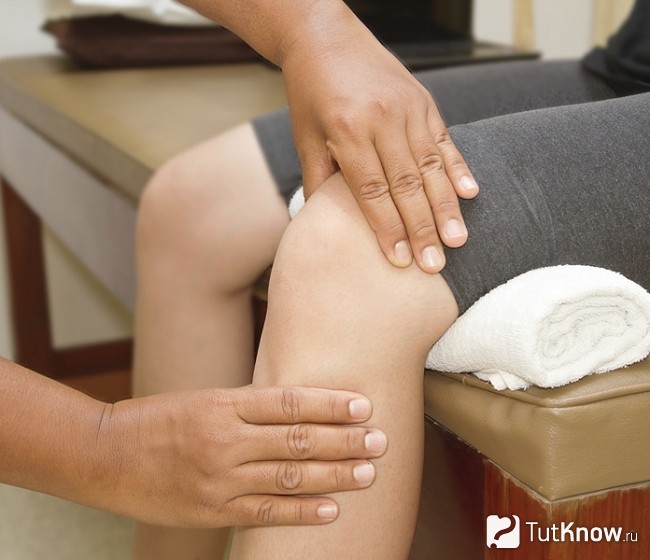
If in infancy clicking in the joints is in most cases considered normal, then in older children this condition needs to be given more attention. Undoubtedly, the body of a child under 8 years of age still continues to grow, but parents should be more wary.
The main causes of clicking in the joints of children under 5 years of age:
- Intensive growth rate. As with infants, in children 3-5 years old, rare, quiet clicks in the joints can be considered normal. A rapidly growing organism does not always have time to maintain the “proportions” of growth. That is, the volume of formation of intra-articular fluid does not always “catch up” with the volume of growth of the joint itself. As a result, there are no conditions for smooth sliding of surfaces and an audible sound of their friction appears.
- Lack of nutrients. To compensate for the growth spurts in a child's body, it needs adequate amounts of nutrients and vitamins. He especially needs calcium-containing foods and mineral complexes. Without receiving important “building blocks” for the construction of the musculoskeletal system, the child’s joints may respond to movements with a cracking sound.
- Drinking regime. A decrease in the amount of fluid inside the joint capsule, as well as a decrease in turgor and elasticity of all components of the joint, can be facilitated by a lack of fluid in children's body. Hence the crunching in small joints.
- Sports loads. “Interruptions” in the production of intra-articular fluid may be a consequence of the child’s adaptation to increased physical activity. Therefore, the joints of a small athlete may “crack” until he enters a training regime.
- Injury. At this age, children already have their own track record» injuries from falls, so this factor also needs to be taken into account when considering the possible causes of “singing” joints, especially if the crunch appears in one specific joint.
- Diseases. Children of this age are also susceptible to inflammation of the joints and periarticular tissues. Therefore, pay attention to what goes along with the crunching - pain, swelling, redness, increased temperature, limitation of movement.
Important! The joints of a child under 8 years of age require no less attention than the joints of an infant. Moreover, the child himself can already help you in diagnosis - tell and show where it hurts, crunches, bakes, etc.
Why do joints crack in a teenage child?

There are many cases of cracking joints in teenage children. They are still in the period of physiological maturation, but specific gravity There are still more reasons for such sound “effects” in adolescents with pathological roots.
The most common causes of cracking joints in teenagers:
- Hormonal storms. It is during the period of 12-15 years that the child’s body undergoes significant changes - a riot of hormones, external changes, internal restructuring. The musculoskeletal system also participates in this “chaos,” which cannot always ensure the uniform development of ligaments, muscles and bones. As a result of this imbalance inside the joint, clicking noises may occur when moving.
- . If a child was born with flexible joints and weak ligaments, then adolescence they're not going anywhere. This condition will remain with him for the rest of his life. Although this condition may be transient if it is caused by the growing osseous-ligamentous apparatus of a teenager.
- . Physical overloads can also have an equally intense effect on a teenager’s joints. At this age, children strive to transform their appearance and mature, including through sports. Incorrectly selected sports loads further aggravate the “stressful” load on the growing body, including the joints. The result is a crunching sound and sometimes pain when moving.
- Overweight. It is not easy to cope with the stress on the joints of a teenager, who are forced not only to undergo spasmodic growth, but also to carry extra pounds. Therefore, you need to be especially careful when correcting weight through sports, so as not to further increase the load on an already overloaded joint system.
- Flat feet. The joints of the legs of adolescents who have uncorrected flat feet are also subject to heavy loads. The answer to such loads may be a crunch.
- Injuries. Teenagers are no less active than younger children. Therefore, they have no less chance of injury. Only in young children can you see the process of trauma for yourself and ask the “victim”, but with a teenage child it’s not so simple. After all, the injury can also be of a “fighting” nature, which parents (from the point of view of the “fighter”) do not need to know about. And this could be the cause of the crunching in the joint. Therefore, the approach to a teenager should be more delicate.
- Diseases. During adolescence, significant changes in the body can provoke serious systemic inflammatory diseases joints, for example, rheumatism. At this age, children are not immune from inflammation of the joints and surrounding tissues, accompanied by discomfort, pain, stiffness, etc.
Important! IN adolescence Not only the physiological processes in the child’s body undergo changes, but also his psyche and personal attitudes. Therefore, parental control over his health condition should become more delicate, but not weaker.
Types of crunching in joints
As already mentioned, all joints, or just one or several, can crack. They can “sound” either constantly or periodically. It all depends on what reason lies behind the loud friction of the articular surfaces.
Joints crack throughout the body

If movement in any joint of the body responds with an unpleasant crunch, you need to think about some kind of global change in the body. One that affects systemically, “massively”, affecting all joints. This may be salt deposition in the joints, age-related changes in the musculoskeletal system, diseases in the hormonal and metabolic areas.
No less dangerous in this regard are obesity, excess protein and deficiency of calcium and vitamins. Glucocorticoids and oral contraceptives, a sedentary lifestyle, and physical overload (work conditions, professional or excessive sports) can affect the functioning of the joints.
All this can contribute to the fact that any joint can click - from the jaw to the joints of the toes. In principle, if they “play” infrequently and in turns, you can simply reconsider your lifestyle and diet, and the condition will return to normal. If they merge into a “choir”, you will need not only to change your diet and exercise, but also to undergo medication (and maybe physiotherapeutic) treatment.
“Singing” joints with notes of pain, numbness and discomfort require special attention - this is a serious reason to consult a doctor. IN otherwise inflammatory processes can completely deprive you of the ability to move.
Shoulder joint cracks
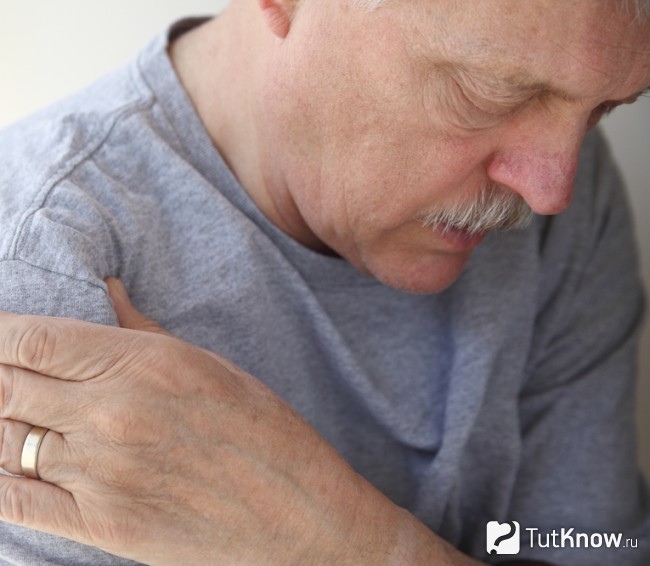
Clicking in the area of the shoulder joint is most often heard when moving the arms up and to the sides - while putting on or taking off clothes, trying to grab the top handrail in public transport, physical exercise etc. Less commonly, joints crack when moving in other directions.
Depending on what caused the crunch, it can manifest itself in several ways:
- Shoulder cracks only occasionally. This may be a consequence of an unbalanced diet, a manifestation of congenital weakness of the ligamentous apparatus or drinking disorders (lack of fluid). Or the already mentioned bursting gas bubbles in the synovial bursa. This may also be a signal to intensify your lifestyle and pay attention to the condition of the musculoskeletal system.
- The shoulder often cracks. In this case, it will no longer be possible to shrug it off and solve the problem by changing your diet and exercising. Most likely, the joint is worn out by physical activity, an untreated injury, or requires restoration of the cartilage surface due to age-related changes.
- Shoulder crunches, hurts, range of motion is limited. like this clinical picture can cause several conditions: arthritis, arthrosis, osteoarthritis, recent injury or inflammation of the ligaments, muscles in the shoulder joint, serious systemic diseases (lupus erythematosus, rheumatism).
Important! If, in addition to an unpleasant crunch in your shoulder, you feel discomfort or pain, do not put off visiting a doctor. Delay can rob your hand or arms of movement, making life much more difficult.
Knee joints crack

Knee joints are among the TOP 3 most sensitive to stress and trauma articular joints in our body. And it’s not surprising, because they are not only part of the mechanism of movement of the human body in space. They actually carry this body.
Manifestations of crunching in the knees can be different:
- Periodic "crunching". It may be the result of wearing high-heeled shoes, the onset of salt deposition, excessive weight or intensity of physical activity (heavy lifting, sports activities), or past injuries. Especially in combination with an excessive love of spicy and fried foods, smoked foods, alcohol and a sedentary lifestyle. This also includes the same hypermobility of the joints.
- Crunching in one knee. Most often it indicates that the reason lies precisely in it. These may be anatomical features in the structure of the joint, the consequences of injury or destructive processes in cartilage tissue.
- Clicking in the knee combined with pain. May appear as a result of excessive stress due to excess weight, “bending” in training or when lifting heavy weights, with flat feet. This is how an injury to a joint or its ligamentous apparatus may manifest itself, initial stage osteoarthritis. The cause of “lumbago” in the knee can be osteophytes (spike-like hard growths on the articulating surfaces of the joints).
- Knee crunching, pain, swelling and limited mobility. Symptoms that may indicate inflammatory processes in the joint itself or surrounding tissues. This may be arthritis (including rheumatoid, gouty), arthrosis, bursitis, tendinitis, the onset of rheumatism. This is how a meniscal injury or chondromatosis can manifest itself.
- Soreness, clicking, knee deformity. They can be caused by diseases such as deforming osteoarthritis and gonarthrosis.
The joints on my legs are cracking
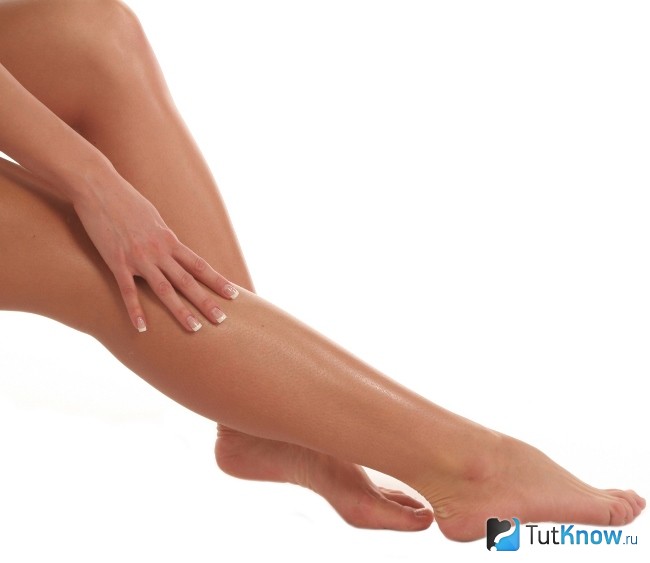
The unpleasant sound of movements in the joints of the legs has much in common with a crunching sound in the knee joint. The involvement of multiple leg joints in the clicking process often indicates that there are one or more complex factors that prevent the joints from working silently.
These may be anatomical features - hypermobility, flat feet, congenital structural features of the joint. Or the consequences of static work (sitting, standing) or a static (sedentary) lifestyle, heavy loads due to obesity, heavy lifting or sports loads. In this case, discomfort in the joints may be limited only to crunching.
As in other tissues of the body, inflammatory processes in the joints of the legs are accompanied by pain and limitation of movement in them. Over time, they can lead to joint deformation. Most often, arthritis of various natures, arthrosis, and osteoarthrosis manifest themselves in this way.
They interfere with the normal functioning of the joints of the legs and inflammation of the ligaments, tendons, and injuries.
Knuckles on fingers crack

Many of us are familiar with the habit of cracking our fingers. Let's not touch on ethical side this phenomenon and let us dwell on its medical significance. So, at the scientific level there is still no consensus on whether it is safe or not. But the reason for such a “forced” crunch is still considered to be the above-mentioned gas bubbles that form inside the joint during its operation. It is the sound of their cracking that we hear when we “wring” our fingers.
Another theory of the origin of crunching in the fingers gives “laurels” to the innate flexibility and weakness of the ligamentous apparatus of the joints. Both of these theories are more suitable for cases when the joints of all fingers crack (not necessarily at the same time) and are considered normal variants.
Let us remind you that deformation, pain and sound “special effects” in the joints of the fingers are far from the norm. This should alert you to inflammatory processes or traumatization. Moreover, trauma and ordinary inflammation of a joint, tendons or ligaments are most often limited to one area (one joint, one finger, one hand).
If all fingers are involved in the process, most likely this is a consequence of a systemic inflammatory process.
What to do if your joints are cracking
In principle, if your joints do not crunch, but sometimes slightly “crunch”, you don’t have to worry too much. All that is needed in this case is to determine possible reason and try to eliminate it (change your diet, introduce or revise physical activity, observe drinking regime, normalize weight, etc.). If the crunching brings significant discomfort into your life (not to mention pain and stiffness), a doctor should determine the cause. He will also prescribe the correct treatment.
Features of traditional treatment for cracking joints

The standard procedure for treating “musical” joints begins with diagnosing the causes of their clicking and the condition of the joints themselves. For this purpose, a medical examination, laboratory tests of blood and urine, puncture (if necessary), ultrasound, x-ray, computed tomography or MRI.
After this, complex therapy is prescribed, which is based on the following components:
- Restricted diet junk food- sweets, spicy and fatty foods, smoked meats, fast food, etc. Preference is given to calcium-rich foods, fruits, vegetables and sufficient amounts of water. Alcohol and strong tea and coffee are also excluded.
- Limiting motor and physical activity, including through immobilization of the affected joint (or joints).
- Nonsteroidal anti-inflammatory drugs (tablets, ointments, gels, capsules, injections) - to relieve inflammation and its consequences (pain, stiffness, swelling).
- Chondroprotectors (tablets, capsules, injections) - for targeted restoration of cartilage tissue.
- Preparations with hyaluronic acid- as a temporary replacement for intra-articular fluid.
- Vitamins and minerals (calcium, zinc, phosphorus, vitamins A, B, E) - to stimulate regenerative and metabolic processes in the joints.
- Dietary supplements - to activate the processes of cartilage restoration and saturate the intra-articular fluid with beneficial amino acids.
- Physiotherapy (magnetic therapy, UHF, shock wave therapy, phonophoresis, radon baths, paraffin, mud, ozokerite) - to improve metabolic processes in joint tissues, eliminate inflammation and prevent sclerosis. It is carried out only after the acute phase of the disease has subsided.
- Manual therapy (therapeutic, relaxing massages) - stimulate blood circulation in the joint area, strengthen the joint and its ligaments.
- Reflexology, vacuum therapy.
- Physical therapy, swimming.
Important! Traditional treatment Crunching in joints is traditionally prescribed by a doctor. Self-medication can significantly harm your health and limit your life in the literal sense of the word.
Joints hurt and crack: treatment with food
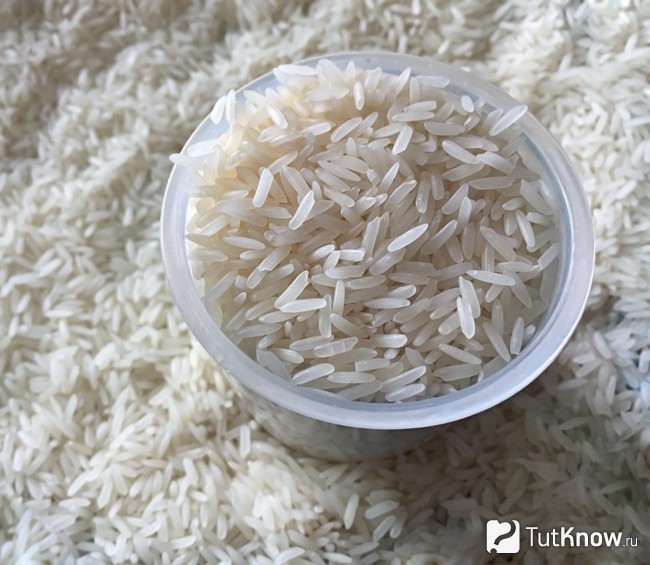
To improve the condition of the joints and restore their elasticity and quietness, there are several unconventional ways to remove salts from the body using certain foods and dishes.
The most effective in this regard are:
- Jellied meat (aspic, jelly). Due to the ingredients they contain, these dishes contain large number collagen, protein, microelements (phosphorus, calcium, fluorine, aluminum, copper), vitamins A, B, C. That is, exactly those substances that are so necessary for joints to “calm” inflammatory processes, restore cartilage tissue, strengthen ligaments and tone muscles . At the same time, jellied meat also has a positive effect on the nervous system. Dishes made from any type of meat, as well as those with the addition of gelatin, will be equally healthy.
- Rice. The good properties of drawing salts from joints are attributed to boiled rice. To make its use as effective as possible, it is important to meet certain conditions. Firstly, it is advisable to pre-soak the rice according to the following scheme: 1 day - soak 2-3 tbsp. l. rice in a glass of water for a day; Day 2 - soak the second glass with rice, and change the water in the first and leave to soak further; Day 3 - soak the third glass with rice, and change the water in the first two and leave to soak; Day 4 - soak the fourth glass with rice, and change the water in the first three again; Day 5 - soak the fifth glass with rice, and change the water in the first four; Day 6 - in the morning, boil rice from the very first glass and eat on an empty stomach without bread and salt; fill the glass with fresh rice and fill it with water, change the water in the remaining glasses. Next, boil the rice one by one according to the described scheme. The course of such treatment is 40 days. After eating rice, it is advisable not to eat anything for 3-4 hours.
- Chicken cartilage. Another powerful source of collagen that can be used to restore joint function. It can be consumed in its pure (boiled) form - 1 tsp in the morning on an empty stomach, washed down with orange juice or boiling water with lemon. It can be in the form of broth from chicken knees (with salt, pepper, bay leaf, according to preference) - 2-4 times during the day. Or as part of the already mentioned jellied meat.
Treatment of cracking joints with folk remedies
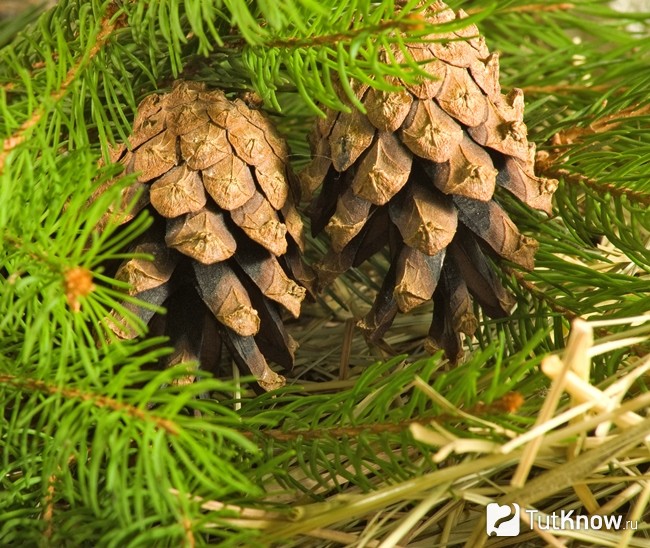
In folk medicine there are many effective recipes for the restoration of joints using medicinal herbs and plants. These can be decoctions, infusions, ointments, lotions.
The most effective recipes traditional medicine for cracking joints:
- Sunflower root decoction. Grind 100 g of plant root, add 1 liter of water and boil for 10 minutes. Refrigerate. Strain and take daily as thirst arises for 3 months. An excellent prophylactic for removing salts.
- Golden mustache ointment. Mix freshly squeezed plant juice with baby cream, Vaseline and any fat in a ratio of 3:1:1:1. The composition can be used as an ointment, rubbed into the area of the sore joint, or as a compress, applied to the joint for half an hour. Gives good results for arthritis, osteoarthritis, gout and rheumatism.
- Infusion from fir cones . Pour 1 liter of boiling water over 5-6 cones and leave to steep for at least half a day. Take the prepared infusion a glass daily.
- Bay leaf decoction. Pour 2 cups of boiling water over 20-30 bay leaves, boil for 5 minutes and leave to steep (preferably in a thermos) for 3-4 hours. The course of taking the decoction is 3 days with a break of a week 1-2 times a year. You need to take the product during the day (the entire volume within 12 hours) in small sips.
- A decoction of calamus, pine buds, oregano and lemon balm. Mix dried and crushed plants in a ratio of 1:2:3:2, select 3 tbsp. l. mixtures and pour 1 liter of boiling water over them. Boil the broth over low heat for 10-15 minutes, strain, cool and take before meals (half an hour before).
Important! The most successful treatment- This is treatment aimed at the true cause of the disease. Therefore, leave the right to diagnose and choose treatment methods for crunching in the joints to a specialist - a doctor.
What to do if your joints crack – watch the video:
Crunching in the joints in most cases is the result of our wrong attitude towards life. Change yourself, don't ignore your doctor's orders - and your movements will be free and easy.
The problem of crunching in the joints is a seemingly harmless phenomenon. But over time it can develop into quite serious illnesses, for example, arthrosis or arthritis. Crunching is essentially a harbinger of joint destruction. Doctors call this syndrome of “rusting” of joints osteoarthritis, since the destruction processes in the joints caused by it are similar to the effects of rust. In the past, this disease was considered a problem of old age. But in our era, unpleasant crunching of joints and pain are increasingly worrying young people. Let's figure it out, why is this happening?
Why do my joints crack?
Many people have cracking knuckles. Often it doesn't bother them
Healthy joints should move silently, we should not feel them. Such sounds never appear by chance. One of their most harmless causes is the anatomical features of the structure of the joints, due to which their biomechanics are disrupted. For example, incorrect placement of ligaments, leading to defects in the structure of cartilage. If this crunch is not accompanied by pain, then at first they do not pay attention to it.
Although the crunch itself is not scary, it can become a signal to which you must respond. The appearance of pain indicates the beginning of a conflict in the articulation of bones. When this happens in the hands, then it is not very dramatic, because the joints of the hands do not experience significant stress. The legs are much less fortunate in this regard: they endure significant axial loads, and this quickly complicates the problem. What causes these sounds?
These supposed causes of clicking may be hidden in the following:
- Disturbances in the structure of the joint - the articular surfaces do not coincide, they can extend beyond the boundaries of the joint box. At the same time, when these surfaces meet, they click when changing position.
- Inflammation of the adjacent muscle - while the cause of the click itself is not fully understood. Some doctors believe that the joint crunches due to significant fatigue or overload. In the same case, a crunch appears if you remain in the same position for a long time, and then suddenly change it. Moreover, if there was a load on a certain part of the body, be it the neck, arm or leg, then a crunch in the joint is quite likely.
- Hypermobility is a joint structure in which they are unnaturally mobile. Often this is a congenital anomaly (and not very rare). In this case, the parts of the joint can practically diverge, without causing significant pain at all. Returning back, the joints create crunching.
- Arthrosis is a disease in which the joints (or rather the cartilage located in them) wear out. This disease is almost inevitable in older people. However, there are often cases when the disease appears much earlier. Why do joints crack under such circumstances? The joint parts, which should be separated by cartilage and connected at the same time, lose the ability to move. This happens due to wear and tear of the cartilage, and the joints lose their flexibility and a crunching sound appears.
- Consequence of injury - both with joint injury and with cracks and fractures of bones, there is often damage to the tissues and blood vessels adjacent to the joint. The resulting compaction or inflammation during recovery makes it difficult to move in the joints.
- Excess salts in the joint - salts, accumulating, strengthen the bones. However, at the same time, the cartilage and the adjacent muscles also harden. This all makes it difficult to move the joints, which can cause clicking and pain. People living in areas where drinking water contains a lot of mineral salts suffer from this disorder.
In most cases, joint crunch is not a consequence of the disease. It is only a manifestation of the imperfection of connective tissues. You should only be concerned if such a crunch is accompanied by painful sensations, indicating the proliferation of bone tissue. They were first described in the works of Hippocrates. He described the disease as arthritis affecting large joints. Already from the 19th century, scientists very often began to pay attention to this disease, since every year the number of patients increased.
According to the World Health Organization, among patients today there are increasingly young people who constantly experience crunching in their joints, and their age is 18-25 years. The reason for this is hereditary predisposition. The environment also has a significant influence on the development of osteoarthritis, and this is not only water and air, but also food products that we use. The disease can appear from an inactive lifestyle; it often affects people who are overweight.
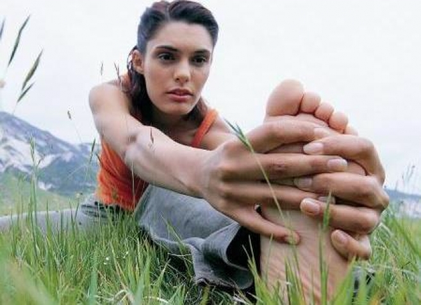
Those who regularly exercise are much less likely to have joint and health problems.
Traditional methods of treating crunch
When treating crunching, it is necessary to reduce the load on the crunching joints. In case of inflammation, anti-inflammatory ointments Diclofenac and Ibuprofen help well. In addition, there are drugs that perfectly restore the structure of cartilage - glucosamine and chondroitin sulfates. They are used internally, being a building material for cartilage, as they restore lost volume and elasticity of the joints. These drugs also have contraindications and side effects. Before using them, you should definitely consult a specialist.
- Unload your joints by providing them with rest: take the load off them (put a pillow under your neck, if you are on your feet, then lie down); provide rest to the joints - for this purpose special clamps are used and elastic bandages. The joint will gradually recover from overwork, and the inflammation will go away
- Don't sit in one position for a long time, change it more often. If possible, do some warm-up or exercise every 2 hours, especially when working sedentarily.
- Use anti-inflammatory ointments, such as fastum gel or others
- If the crunch is a consequence of injury, and also when it is accompanied pain syndrome, – it is better to immediately contact a specialist, for example, an orthopedist-traumatologist
Therapeutic gymnastics offers a dosed load on the affected joints, which can improve the condition of cartilage tissue. Water aerobics or swimming helps a lot - in water the stress on the joints decreases. What do people in white coats advise if your joints suddenly start to crack? So, the joints crack: the treatment for this is most often medicinal. If you have acute form arthritis, and there is also inflammation, then anti-inflammatory drugs are usually prescribed non-steroidal drugs. In particularly difficult cases, a course is prescribed hormonal drugs, however, they can suppress the adrenal glands.
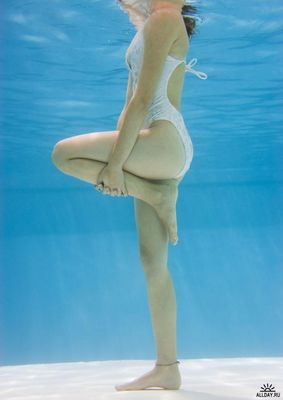
Water aerobics, swimming, exercises in water are extremely beneficial for joints
Non-drug methods
In addition to traditional therapy, non-drug therapy is also used, which includes physiotherapy, as well as various auxiliary devices: canes, crutches, bandages and knee pads. All of them help reduce stress on affected joints. Modulating methods are also used to restore damaged cartilage. In addition, special injections are given inside the affected joints. An important role in the treatment of crunchy joints is played by special ointments and gels, which not only reduce pain, but also treat joints.
However, they also have their own contraindications (thrombophlebitis, pregnancy and blood clotting disorders). There are also adverse reactions(heaviness inside the stomach, nausea and allergies). There is also a restriction on taking such medications (they can only be taken for 2-3 months in a row - no more). To establish a correct diagnosis with prescription proper treatment in any case, it is best to contact a specialist - an orthopedist, traumatologist or surgeon.
Surgical therapy is prescribed when the cause of the crunch is osteoarthritis, and drug treatment no longer effective. Artificial joints implanted in a patient return him to normal life. To alleviate osteoarthritis, it is necessary to give the crunchy joint a rest by unloading it. Orthoses are very helpful in this case - these are orthopedic devices that hinder the mobility of the joints. Their semi-rigid cuffs are tightly fixed using special belts.
In addition to the above treatment methods, as already mentioned, drug treatment is prescribed. First of all, drugs are used that relieve pain. Anti-inflammatory ointments such as Ibuprofen and Fastum-gel and Diclofenac help well. These types of medications are taken orally. They serve as building materials for cartilage, restoring lost volume and elasticity of all articular surfaces.
Prevention
It is better to start preventing this phenomenon from birth. So, my joints are cracking, what should I do? Method for preventing cracking joints and diseases support system– use pumpkin, sunflower and sesame seeds for food, as well as vegetable oils. Lack of fluid in the body causes a decrease in the amount of lubricant released in each joint. Therefore, it is necessary to drink more liquids, it is best mineral water. It is useful to eat cucumbers more often, because they contain liquid.
In addition, they contain microelements involved in the formation of cartilage tissue. If timely prevention is carried out, this will prevent the development of severe lesions joints. Adults should monitor their weight and correctly alternate loads on their joints. During the working day, it is important to move more often, avoiding fixed positions.

Note that you should consult a doctor even if the crunching is not accompanied by any symptoms. Indeed, in many cases it is the first sign of osteoarthritis. Osteoarthritis is a slowly progressive disease, sometimes leading to complete destruction of articular cartilage. In addition, it causes deformation of the bones at the joint ends, which causes a significant increase in the frictional force inside the joints during movement. And then a characteristic crunch appears in the joint.
The insidiousness of this disease lies in the fact that it does not show itself for a long time. Moreover, the stage of the disease affects the effectiveness of its treatment. The less the destruction process affects the joint, the better the prognosis. Because of this, if a cracking or crunching occurs in the joint when moving, it is better to consult a specialist and undergo an x-ray examination. It will allow you to accurately determine whether the joint is affected by osteoarthritis.
Your comments and questions for the doctor:
At the top of the comment feed are the last 25 question-answer blocks. I answer only those questions where I can give practical advice in absentia - this is often impossible without personal consultation.
